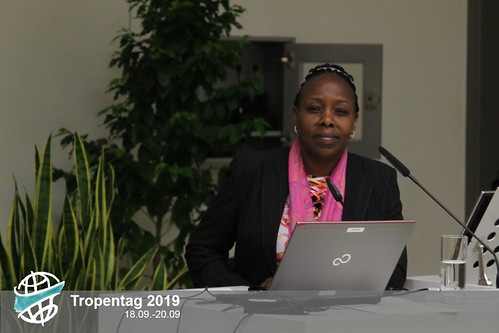Policy briefs would simplify science: are policymakers and scientists ready?...
Science and other knowledge are not used effectively in the policymaking process. Most of the time, there is a disconnect between scientists and politicians, they contradict each other due to different values related to their involvement in the science-policy interface.




Immaculate N. Maina- County Minister of Agriculture, Livestock and Fisheries, Nakuru County, Kenya was among the keynote speaker who gave a great speech on Scientific knowledge transfer and the Science-Policy Interface: Bridging the Gaps and Overcoming the Traps ” Scientists need opportunities to engage with policy makers. For instance, the Tropentag conference could be one of the platforms. Having open dialogues can enhance the knowledge hence understanding in the policymaking process. The academic research findings are to be consumables to the community not just end in conferences and publications.” - Immaculate N. Maina
A policy can have both positive and negative effect on the community. Agricultural policy, as a part of public policy, has to involve multidisciplinary bodies to ensure that positive and sustainable results are generated. However, policy should provide solutions with supportive evidence. Science-policy interface should involve knowledge generators, knowledge synthesizers, knowledge comprehension scientists and knowledge brokers. Therefore, simplifying the scientific findings into a policy brief easily understood by the by a non-academic audience including the policymakers.
Agriculture employs more than 62% of Kenya total employable population. According to Immaculate, there are about 100 agricultural value chains in Kenya. Therefore, inclusive agricultural policy is essential for the country development. Every key stakeholder from environment, government, knowledge, trading, production, consumers, finance areas, have to get involved. National government and country government of Kenya has come up with the Agriculture Sector Transformation Strategy (ASTGS). The strategy creates a multidisciplinary body, to make sure that ASTGS can bridge the gap and removing the traps in the agriculture sector. It also promotes public-private partnership (PPP) to make the theory of change easily understood and absorbed.

“Nankuru county has tried several mechanisms to involve youth in several matters, we have come with youth international framework from IFARD to encourage them from the community and public activities participation that most of the scientist share their knowledge. However, they mostly don’t come in academic-community programs because they think they may not fit or not understand, fear to share their opinions in public. We need to empower them more.”- Immaculate N. Maina responded to question on how youth without academic background can be engaged in policy making process.

Immaculate then suggested that academic congress, such as Tropentag, could be an excellent forum to address policy-making issues. Encouraging policy makers from all over the world to attend the conference would make a big difference by opening dialogues and allow more conversation on the role of science in policy issues.





Comments
Post new comment